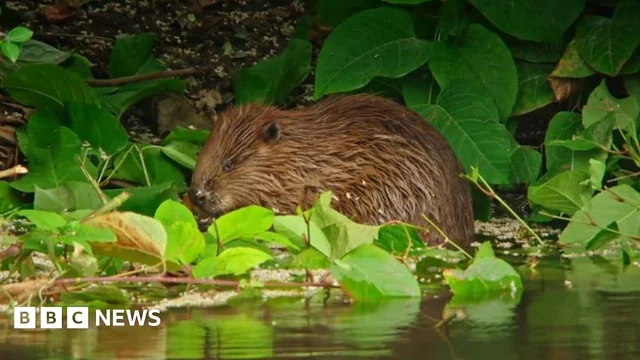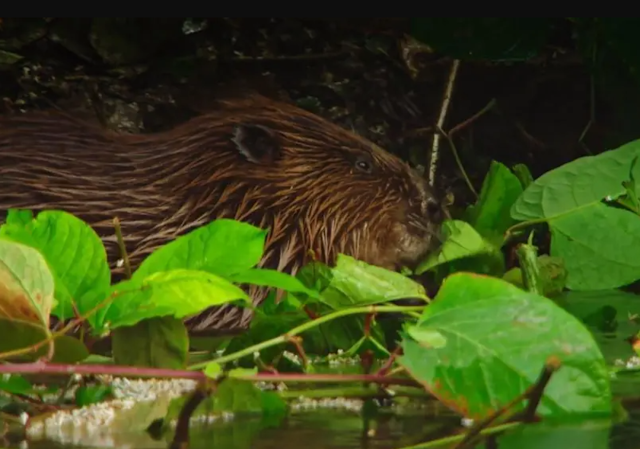Introduction
In a rare and heartwarming turn of events, a wild beaver has been spotted in the UK for the first time in 400 years. The viral video, which captures the animal lounging peacefully by a riverbank, has sparked widespread fascination online. This “very chill” beaver is more than just a cute sensation—it marks a powerful milestone in British conservation and rewilding efforts.



1. The Viral Video: A ‘Very Chill’ Beaver
The video, originally shared by a local wildlife monitoring team in Devon, captures a beaver sprawled contentedly near the edge of a river. Viewers were struck by the animal’s calm demeanor, leisurely grooming itself and showing no signs of fear. The clip quickly spread across social media platforms, sparking renewed interest in the return of this once-extinct mammal to British soil.
This behavior, experts note, is a good sign. “If a beaver feels safe enough to groom and rest out in the open, it means the habitat is working,” explained a spokesperson for the Devon Wildlife Trust, which has been instrumental in reintroduction projects.
2. A 400-Year Absence Finally Ends
Beavers were once widespread throughout Britain but were hunted to extinction by the 16th century. Their pelts were highly valued for warmth and water resistance, and castoreum, a secretion from their glands, was used in perfumes and medicines.
Their disappearance left a notable ecological void. Wetlands that had once thrived under their management became drier and less biodiverse. But thanks to pioneering rewilding projects like the River Otter Beaver Trial, which began in 2015, beavers have begun to reestablish themselves in their native habitats.
3. Why Beavers Are Essential to Ecosystems
Beavers are known as “ecosystem engineers” for good reason. Their dam-building behavior shapes landscapes in ways that benefit a host of other species—and people too.
- Flood Prevention: Beaver dams slow down water flow, reducing the risk of flash floods during heavy rain.
- Wetland Creation: Dams and ponds create thriving wetland ecosystems, supporting frogs, fish, otters, and birds.
- Drought Mitigation: Beaver ponds store water that helps landscapes remain hydrated during dry periods.
- Carbon Capture: Wetlands are excellent carbon sinks, helping to reduce atmospheric CO₂.
4. From Rewilding to Legal Recognition
In 2022, England made a landmark decision to legally recognize beavers as a native species once more. This move followed years of data collection, monitoring, and debate. Now, beavers and their habitats are protected under the law, and any attempts to harm or move them must be approved by wildlife authorities.
“It’s a huge moment for UK conservation,” said a representative from Natural England. “Beavers bring incredible ecological value, and their protection shows that we’re serious about restoring our natural heritage.”
5. The Future of Beavers in Britain
With public support on the rise and conservation science advancing, more regions are considering or actively planning beaver reintroductions. Scotland and Wales have already seen similar successes, with beavers returning to parts of the Tay, Tayside, and Dyfi valleys.
Educational outreach is also helping communities adjust to life with beavers. While beavers can sometimes fell trees or flood farmland, mitigation strategies—such as flow control devices and buffer zones—help balance conservation with local needs.
More Comebacks to Celebrate
While the return of the beaver is especially symbolic, it’s part of a larger wave of rewilding efforts that include:
- White-tailed Eagles: Reintroduced to the Isle of Wight after being extinct for over 240 years.
- Wildcats: Breeding programs in Scotland aim to revive this critically endangered native predator.
- Red Kites: Once reduced to a few breeding pairs, these birds of prey now thrive across the UK.
- European Bison: Introduced into Kent in 2022 as part of a woodland regeneration experiment.
Conclusion
The “chill beaver” video is more than an internet delight—it’s a hopeful chapter in the UK’s environmental restoration story. With centuries of ecological loss behind us, this moment signals a shift in how humans relate to the land and its original inhabitants. As the UK continues to rewild parts of its landscape, stories like this remind us that nature has an incredible ability to recover—if we let it.
So go ahead—watch the video, share the story, and support the movement to bring British wildlife back from the brink.
Watch the video here: Very Chill Wild Beaver Returns to UK
Read more: UK Wildlife Reintroduction Projects









